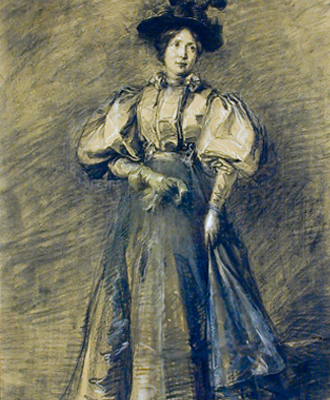AMUM for Everyone
The Art Museum at The University of Memphis leads the charge in creating a digital museum experience for 2022 and beyond
By Casey Hilder

There’s no feeling quite like browsing a museum and seeing centuries of creative works in just a few short steps. Over the past year, the staff of the Art Museum of the University of Memphis has worked to bring that unique sensation of peering through the lens of history beyond the gallery halls to the homes and devices of art aficionados and curious souls worldwide by documenting a substantial array of permanent collections online.
“We didn’t have much of an alternative at the time,” says Leslie Luebbers, director of the Art Museum at the University of Memphis, citing the uncertainty of the pandemic as one of the driving factors behind the decision to revamp AMUM’s online catalog. “It was an act of necessity, but also a great opportunity for us.”
The new online catalog contains collections managed by the Art Museum of the University of Memphis (AMUM) and the Institute of Egyptian Art and Archaeology (IEAA). At the bottom of each catalog record, viewers will find a data field indicating which organization manages the object. Questions related to objects in the collections can be addressed to the appropriate contact within the museum, adding the potential for back-and-forth discussion between visitors and curators.
The online catalog groups art in many different ways that might be helpful to the viewer, allowing items to be sorted by material, medium (drawings, fine art prints, paintings and sculpture), collections (including the sizable ancient Egypt and African art collections) and place of origin. The online collections database is steadily growing, with an overarching goal to bring AMUM’s complete catalog online in the near future.
Luebbers credits Kristy Griffin, the new assistant director of the Art Museum at the University of Memphis, for taking up the substantial task of logging hundreds of works of art in a sizable digital database of sorts.
“This was not my first museum that I’ve taken online,” says Griffin, who once helped establish a substantial online presence for Wyoming State Museum by documenting several thousands of items online in a collection that numbered up to 70,000. “That particular museum had been collecting since around 1895, so they have quite a lot of stuff.”
The complete catalog of AMUM, which opened its doors in 1981, is comparatively smaller, housing more than 4,000 different items including the IEAA collection.
For Griffin and Luebbers, the transition to a digital catalog offered a crucial connection to the museum’s collection of historic works during a time where museums across the country were unable to operate as usual.
“If we ever get stuck working at home, we can still look at our collections and do certain kinds of research," Griffin says. “This was a big part of helping us to join during closures.”
The new online catalog was achieved through the use of a collection management system called PastPerfect Museum Software, a catalog system used by museums across the country used to track things like outgoing loans, incoming loans and temporary items. AMUM employees all have a unique login that can access and build upon the collection from anywhere with a connection to the internet, while a function called “public access” allows catalog records to be listed for viewing by anyone as a key public-facing feature of the software.
The museum’s online catalog is now available for viewing at amum.catalogaccess.com.
Further innovative moves from AMUM include the implementation and regular use of Omeka, an open source web-publishing platform built specifically to display museum collections and exhibitions.
“It’s a little bit different from something like our digital catalog in that you’re actually adding a curatorial oversight and narrative to the exhibits instead of simply logging items,” Griffin says.
This free-to-use platform allows for virtual exhibits to be easily created and maintained for the purpose of showcasing art in a variety of ways. This is achieved through blog or wiki-style pages, as well as more freeform design layouts.
“What’s really nice is that each of these pages can be displayed in a way that looks very different from one another, so it’s like being guided through a museum in different sections,” Griffin says. “A lot of this is student-driven and we started the process with Hindsight 2020, which we built from the ground up knowing that was how we needed to display it due to all the closures and uncertainty at the time.”
Griffin says the idea behind this new method of showcasing artists’ work came with a desire to disrupt the traditional curatorial voice in terms of who has the power to craft the narrative in a museum, which was embodied in Hindsight 2020’s hard-edged take on documenting the racial turmoil and uncertainty of 2020.
“There is a push in the museum field right now to question the traditional curatorial voice, and to try and wrestle some of the power to craft cultural narratives away from museums and place it in the hands of the community,” she says. “These types of efforts have DEAI goals, with aspirations of creating platforms for new voices to be heard and to make museum spaces more approachable. At UofM, the students are our Community and they should be supported and empowered to craft narratives reflective of their lived experiences. That was the driving force behind the exhibit.”
A selection of AMUM’s virtual exhibitions can be found online at amum.omeka.net.
“The online exhibitions do wonders for our teaching mission, which is a big part of what I do,” Luebbers says. “These exhibitions allow us to continue to work with our students involved in the museum studies program. This is the kind of work, as well, that can bring in many students who have not identified as having an explicit interest in museum studies.”

